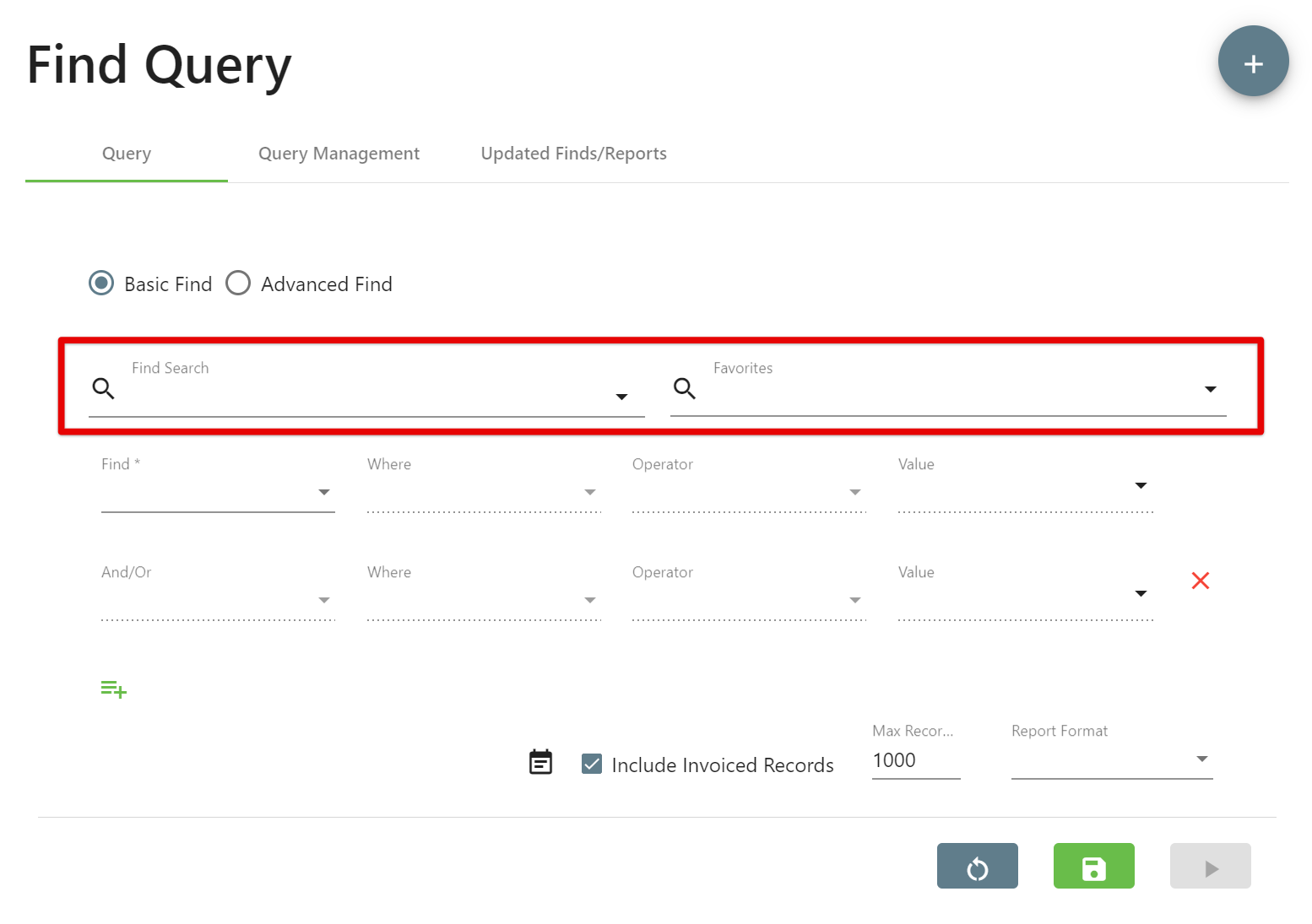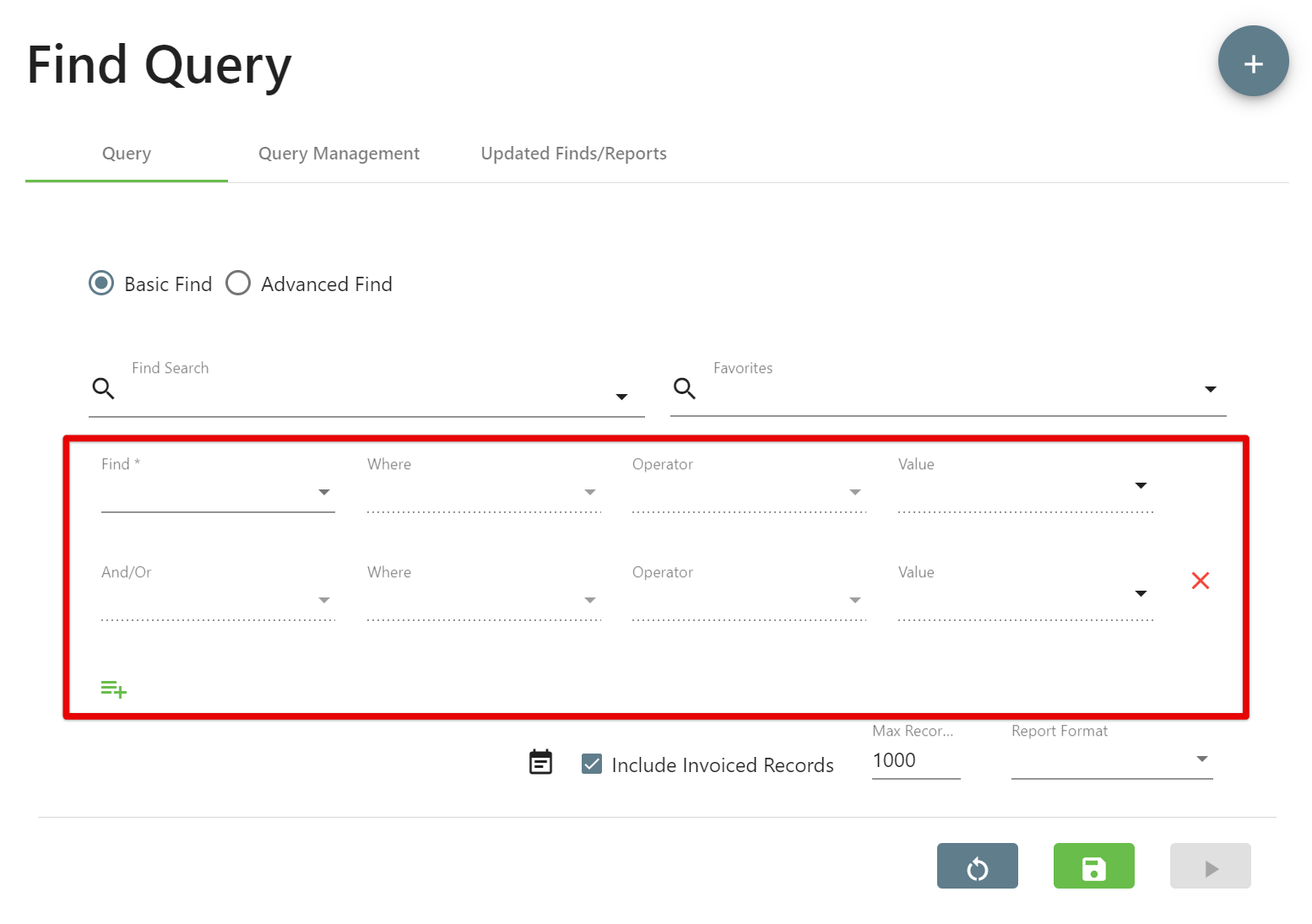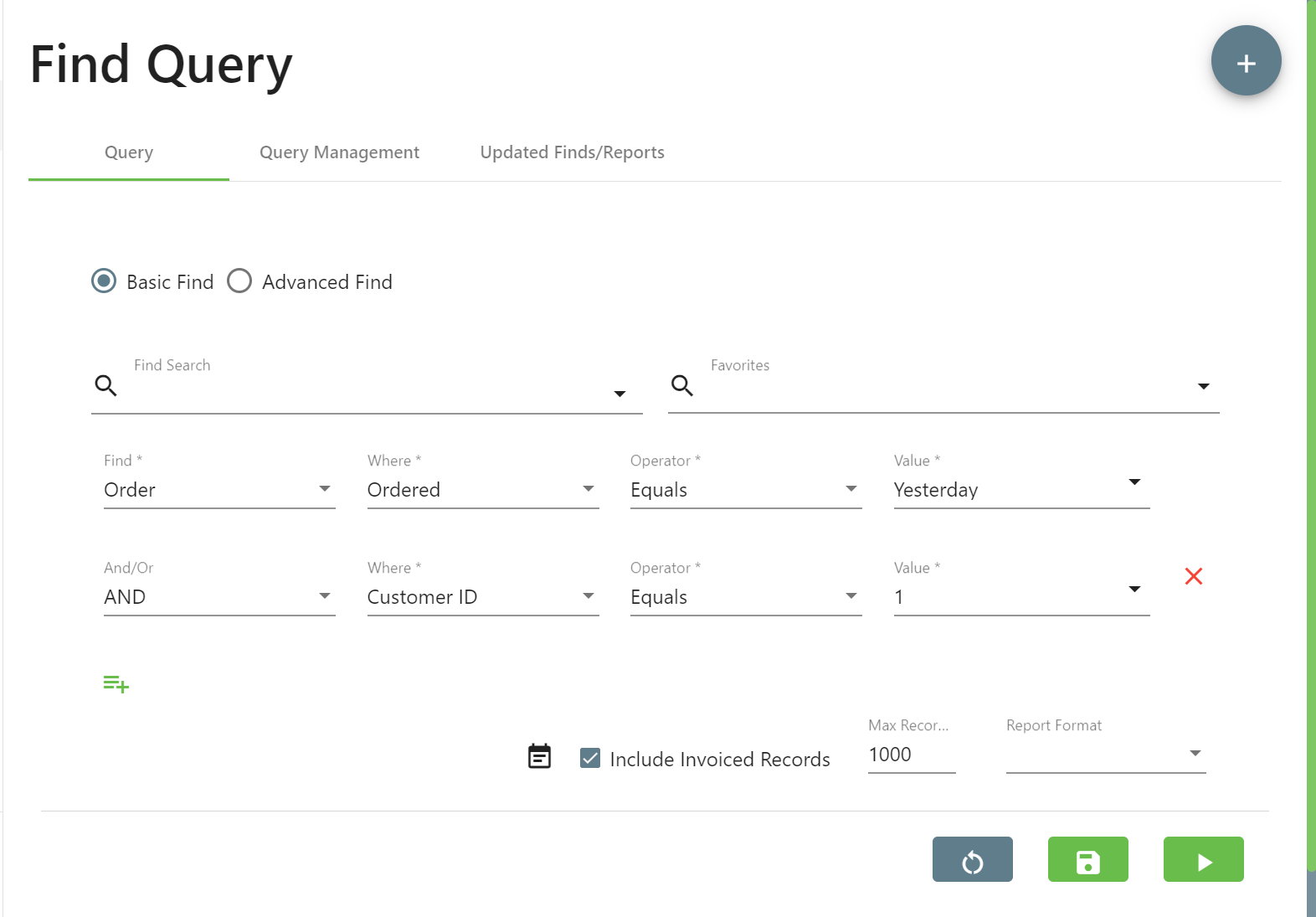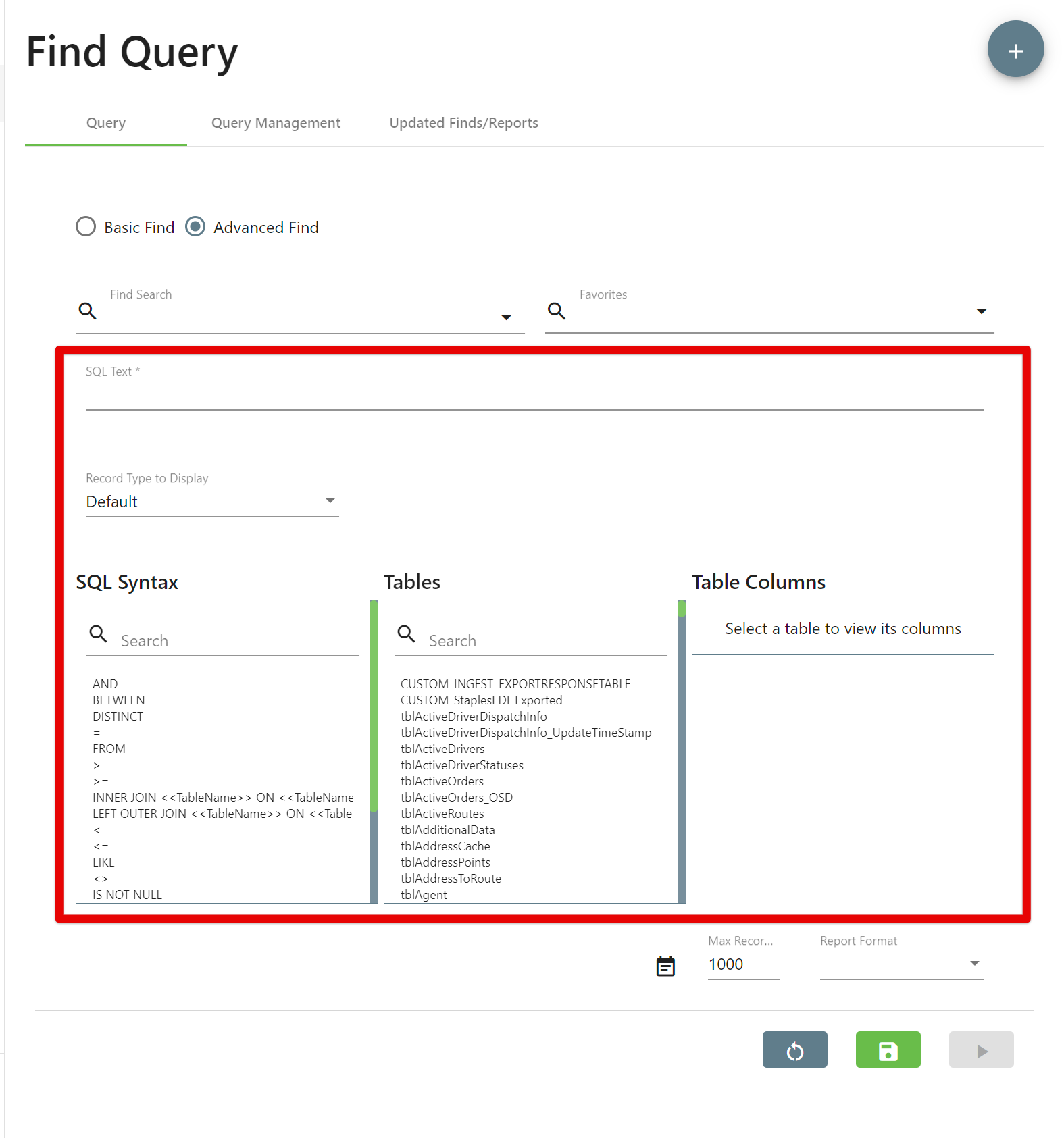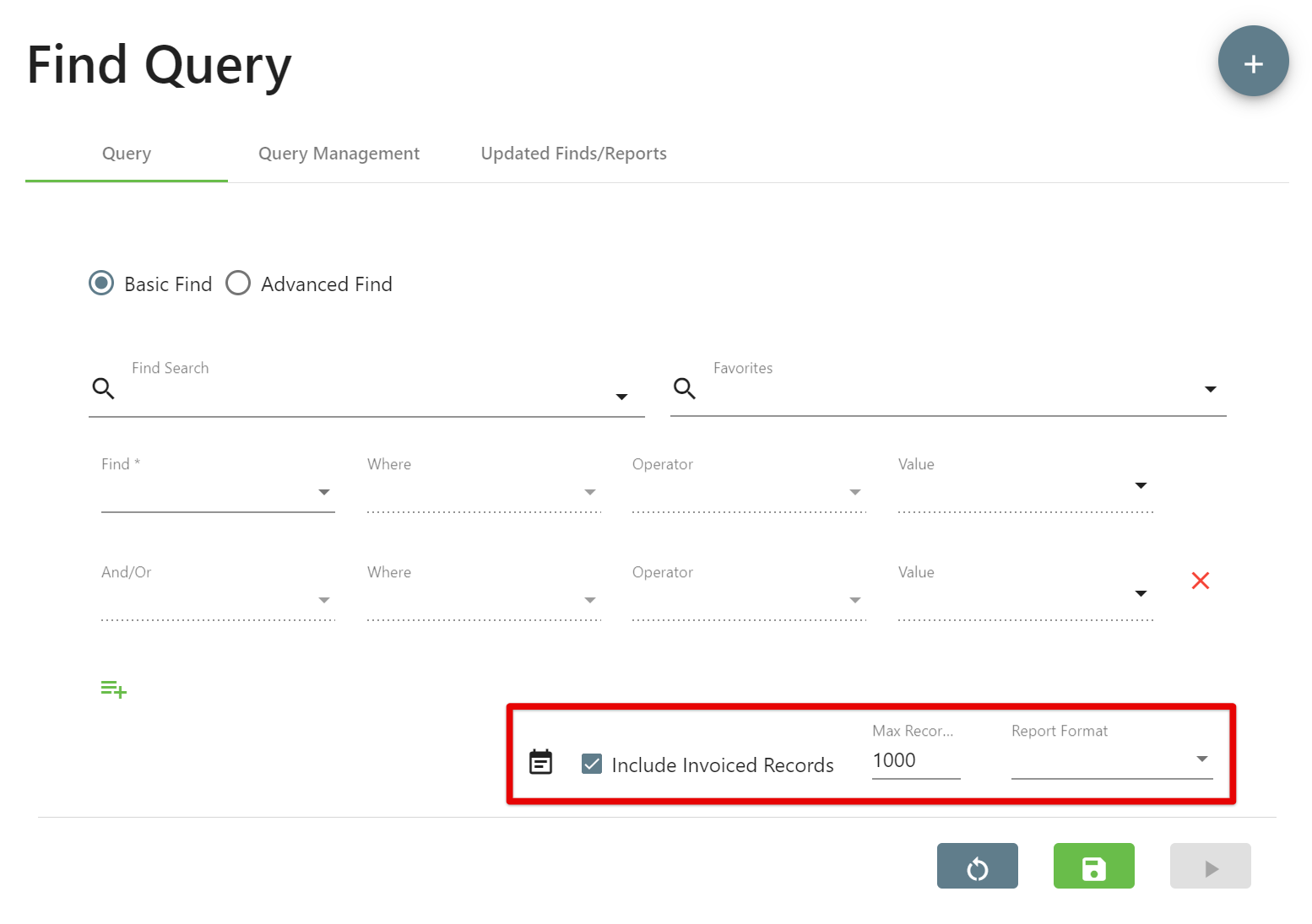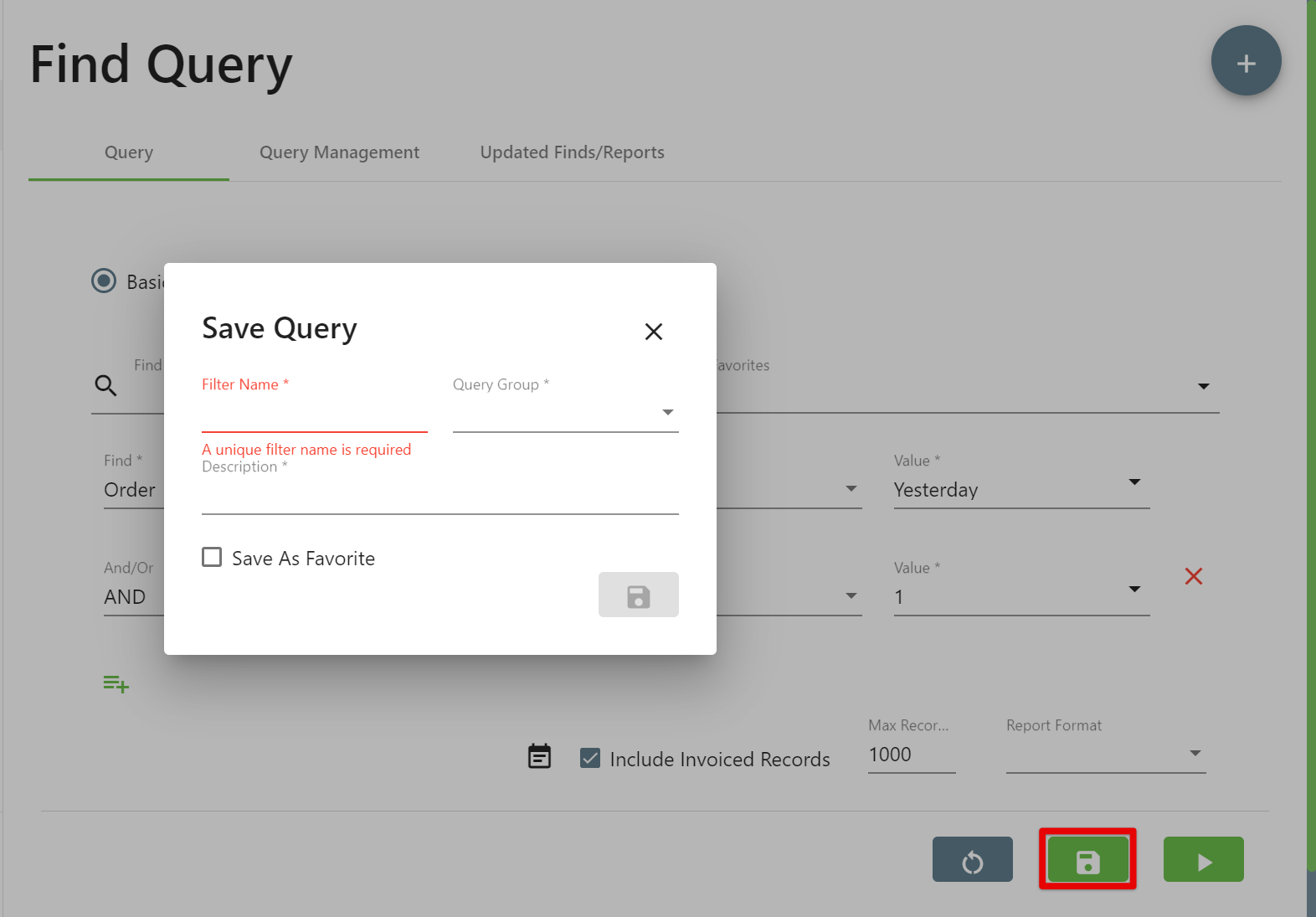| Info |
|---|
This page is for the Operations App. For the Classic Operations App please see Find Query (Classic Operations App). |
...
| Excerpt | ||||||||||||||||||||||||||||||||||||||||||||||
|---|---|---|---|---|---|---|---|---|---|---|---|---|---|---|---|---|---|---|---|---|---|---|---|---|---|---|---|---|---|---|---|---|---|---|---|---|---|---|---|---|---|---|---|---|---|---|
| ||||||||||||||||||||||||||||||||||||||||||||||
The Query tab allows you to create, save, or execute saved queries. Use Saved QueryUse Find Search or Favorites to search or select a favorite query to execute.
QueryBasic FindSelect Basic Find to create basic finds. This is the default option. Use the following fields to help create a query. If the query criteria does not include date parameters, a default date range of +/- 30 days is applied in order to avoid performance issues from extremely large result sets. on demand orders will be based on Date Ready and route stops will be based on Post Date."
Advanced FindSelect Advanced Find to create advanced finds. Enter the SQL statement you would like to use for your Advanced Find in the SQL Text field. You can use the filters below (SQL Syntax, Tables, Table Columns) to help create the SQL statement by filtering the SQL syntax, database table, and column (this is populated based on the database table selected). The Record Type to Display field can be used if the result record displayed is not what you expect. Updating this field will override the default result record type to display when double-clicking on a record to open it. This setting has to be changed before executing the find to apply to the results.
OptionsYou can select how the Find results will be displayed.
Save QueryYou can save a new query or update an existing one by clicking on the save icon in the bottom right. The Save icon is enabled when the Filter Name is entered.
|
...
After you have run a successful query, you will have a few additional options in the icon bar above the results.
...
Icon | Description | ||
|---|---|---|---|
Bulk trigger status event SQL for the result set. Available status event SQL that can be triggered will be displayed. Available when results are related to orders or route stops. | |||
Export the results to CSV, JSON, TEXT, XLS, or XLSX format. | |||
Opens the Bulk Rate Update form to make bulk rating, or driver pay adjustments to the orders or route stops in the result set. See Bulk Rate Update. Available when results are related to orders or route stops. | |||
Opens the Adjust Stop Times form to make bulk changes to the Min, Max, and Preferred times of stops in the returned result set. See Adjustment Stop Times. Available when results are related to contract or route stops. | |||
Run associated reports for the selected Saved Query. Available when a report is associated with the selected Saved Query. | |||
Open the Email Find Results form to email the query results.
| |||
Open the Select Visible Columns form to hide and/or reorganize columns for the query results. If a Saved Query was ran, this will be applied to all future query results, exports, and subscriptions associated with the Saved Query. |
Query Management
| Excerpt | ||||||
|---|---|---|---|---|---|---|
| ||||||
The Query Management tab allows you to view and edit saved queries.
SearchType in the Search field to search for save queries. This search uses a type ahead feature which filters the results below as you type. How to Create a New Group FolderClick the add icon on the right to create a new folder. How to Edit a GroupClick on a group to edit the group name or delete a folder.
How to Edit a Saved Query
Click on a query to open the edit form. You can use the action menu on the left to run, subscribe, or activate/deactivate the query. How to Activate/Deactivate a Saved Query
|
...
